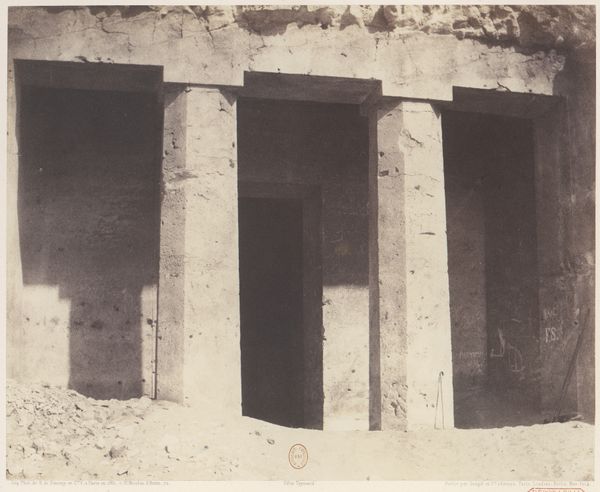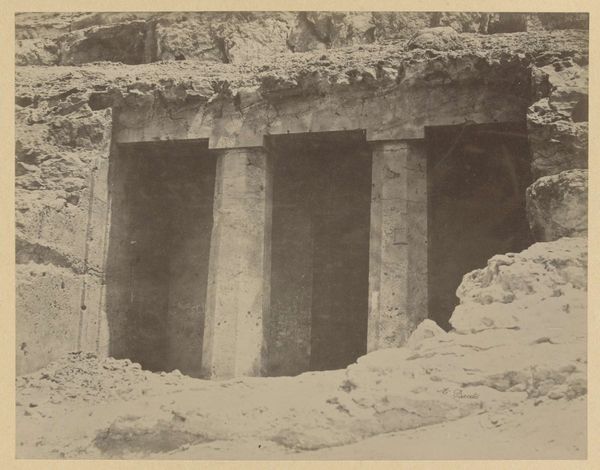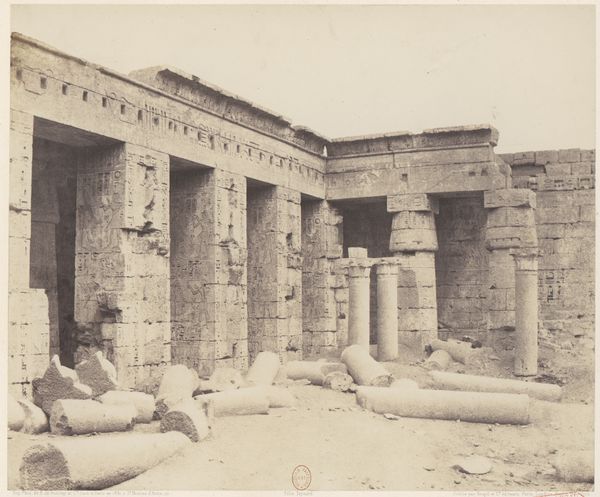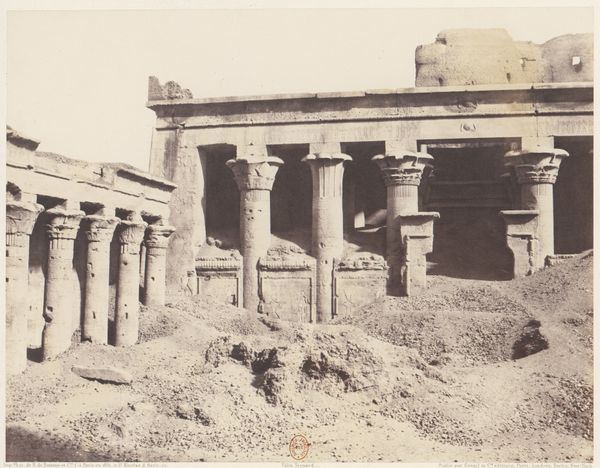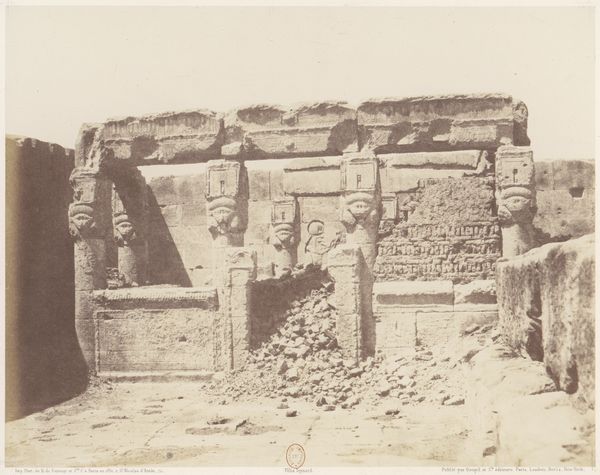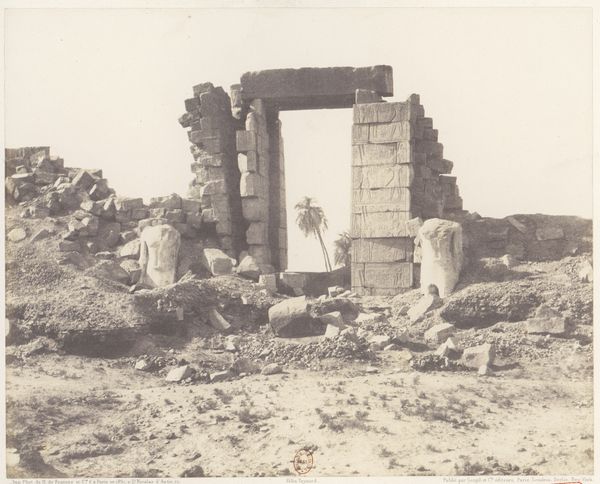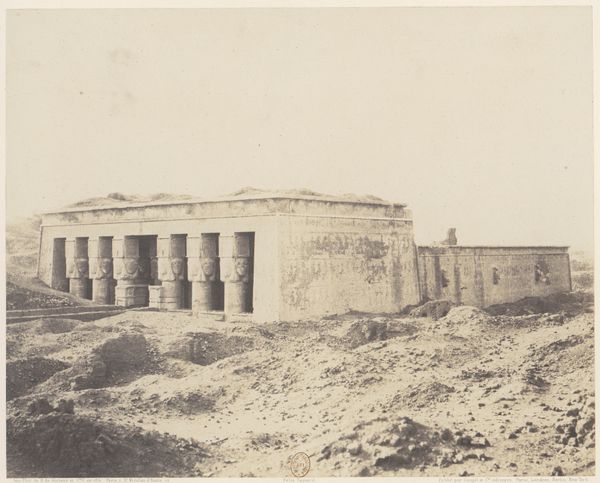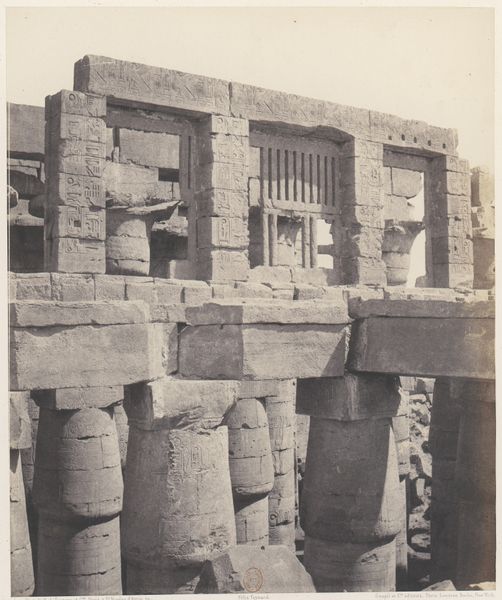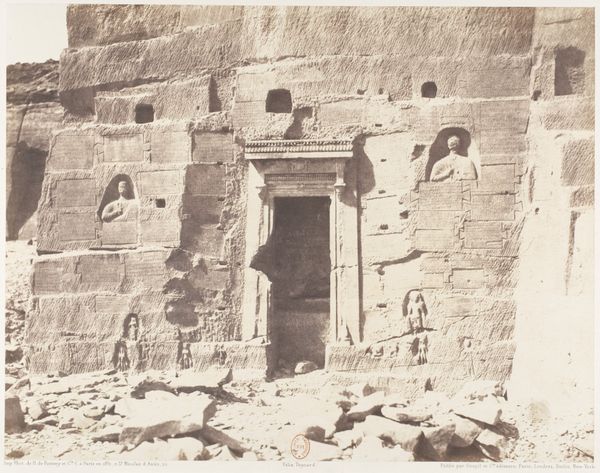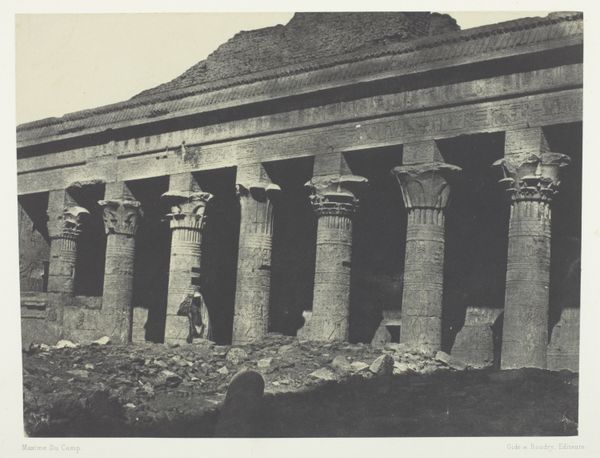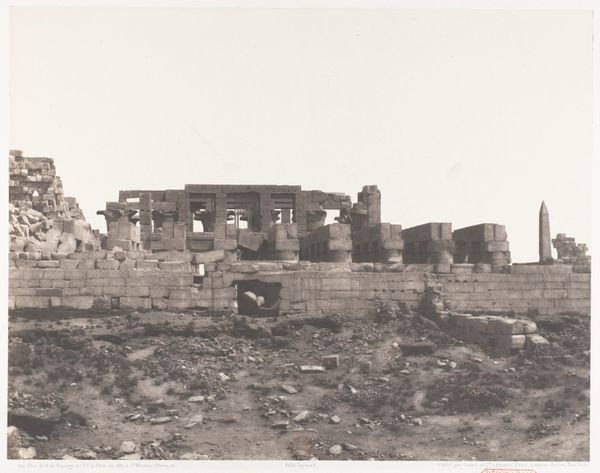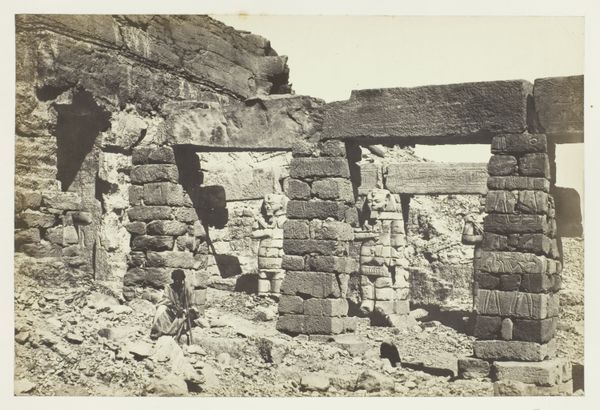
Béni-Haçan, Architecture Hypogéene - Tombeau de Névothph 1851 - 1852
0:00
0:00
photography, architecture
#
landscape
#
ancient-egyptian-art
#
photography
#
geometric
#
ancient-mediterranean
#
column
#
architecture
Dimensions: 23.8 x 30.4 cm. (9 3/8 x 12 in.)
Copyright: Public Domain
Curator: What a haunting photograph. This is Félix Teynard’s "Béni-Haçan, Architecture Hypogéene - Tombeau de Névothph," taken between 1851 and 1852. It captures the rock-cut tomb in Middle Egypt. Editor: It certainly has a stark, austere quality. The tonal range is quite narrow, emphasizing the rough textures and the geometric simplicity of the columns and lintels. I notice the composition is rigidly symmetrical. Curator: Yes, the geometry reflects the profound symbolic order that permeates ancient Egyptian beliefs about death and the afterlife. Tombs weren't merely final resting places but powerful portals and declarations of eternity. The columns themselves, though seemingly simple, echo earlier plant-based supports – referencing the life that bursts forth from the earth, a metaphor for resurrection. Editor: Interesting. I was struck more by the negative space. The darkness of the tomb entrances creates a void, a strong contrast with the solidity of the stone architecture. It introduces an almost palpable sense of mystery. Look at how those voids mirror each other. Curator: That visual balance serves a deeper purpose. Egyptian art, especially funerary art, constantly seeks equilibrium – the unification of opposites. Life and death, order and chaos. That carved façade represents not just physical space but also the psychological space of transition. It makes me consider the relationship between memory and mortality within ancient Egyptian society. Editor: I appreciate that. For me, though, the rough-hewn surfaces and imperfect symmetry enhance its aesthetic appeal. There's a beautiful tension between the formal architectural structure and the erosion and defacement marked on those walls. Those irregular textures and defacements break what would otherwise be very mechanical visual elements. Curator: Indeed. These imperfections whisper a history of both time and cultural interaction, a palimpsest where ancient beliefs have mingled with modern realities. Editor: Exactly! And to bring it full circle, the artistry resides in its successful translation into this starkly beautiful image! Curator: The past brought into our present, beautifully. Editor: An architectural wonder made present to us via an eye toward form.
Comments
No comments
Be the first to comment and join the conversation on the ultimate creative platform.
